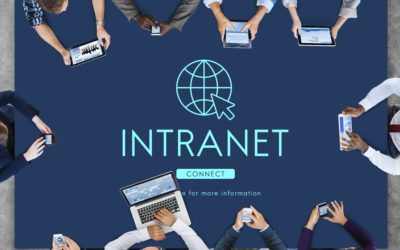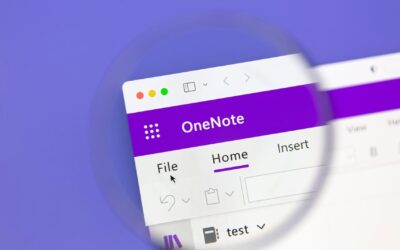Isn’t it just one server?
Why do we have to pay monthly management fees for three virtual machines (VMs) if each one resides on a single server?
Can’t we just be charged for one physical machine?
I thought virtualization was supposed to save us money.
I’ve been in the managed services business since the early 2000s and can fully empathize with any business owner’s concerns around cost.
The purpose of this brief article is to give you an inside look into the three major factors that make it necessary for an MSP to charge clients for managing every server and VM in their environment.
For the sake of simplicity, a physical server consists of hardware, an operating system, and applications.
When you virtualize a physical server, it requires VM software (a hypervisor) to host one or several other individual operating systems and applications.
So it’s not one server by a long shot.
1 – Administration & Human Resources
When you reduce the total number of bare metal servers and virtualize servers onto one box, you are making more efficient use of processing power, improving system redundancy, and lowering your real estate costs.
One physical box is doing a lot of the heavy lifting for a bunch of other virtual boxes.
Who wouldn’t want one server instead of twenty? The latter option creates clutter and consumes a lot more electricity.
You can’t turn the AC low enough to prevent a skyscraper of servers from overheating.
It’s also nice to be less reliant on costly equipment refreshes every four to five years.
So virtualization is definitely saving you money in this regard.
However, each VM still has complexities and interdependencies with other VMs:
- File Servers
- File Storage Servers
- Database Servers
- Web Servers
- Domain Controllers
- Application Servers
- Email Servers and Archiving Servers
- Print Servers
This creates administrative noise that requires continuous and dynamic supervision from highly skilled system engineers, network engineers, and project managers.
Each IT professional has advanced certifications and is part of a team that monitors, diagnoses, remediates, and schedules corrective actions.
They also have to be ready at a moment’s notice (even in the middle of the night) to be onsite, in your office, to address your server needs – both physical and virtual.
Your Integris Service Level Agreement (SLA) includes this unique benefit. We won’t simply respond to an alert at 3 am with an automated response.
One of our on-call techs will be in your IT closet within four hours.
Contractual obligations of this magnitude add tremendous value along with some unavoidable associated overhead.
2 – Automation & Business Intelligence
Using Professional Services Automation (PSA) and Remote, Monitoring and, Management (RMM) tools, tech support keeps a constant pulse on every client.
Our PSA is Connectwise, a robust MSP ticketing system where all client matters are captured and cataloged 24/7/365.
I initiated a ticket query for servers and VMs and was surprised to see so much activity around VMs.
A lot can happen when different applications, operating systems, and hypervisors (VM software) are running on physical servers.
The following client excerpts capture a wide swath of support activity with simplified ticket details (to avoid taking you down a technical rabbit hole).
Daily backup verification alerts are triggered if “a machine fails to boot fully into the operating system.”
When disk space usage is nearing capacity, the system generates an instantaneous failed state message to cue up timely resolution.
Clients are prompted to approve and schedule critical patches and updates for their virtual server host machines.
A lot of planning goes into this. Since service can be impacted, tech support and the client may take a few weeks to determine the best time to move forward.
When VMs are not behaving well on certain host machines, Integris techs open a ticket to set up a migration path along with information about the number of hours involved in the transition window.
They also include a contingency plan to host the VM on a local storage device as an extra added redundancy, in the event the new VM fails to spin up.
All of these activities are included in the fixed monthly fees. No project charges apply.
3 – Strategic Account Management (SAM)
Your servers and VMs (and everything else we manage) will be plotted and tracked on a Strategic IT Roadmap.
This master planning document is thoroughly discussed in regularly scheduled Account Management and vCIO meetings with your main point of contact or Technology Planning Committee.
With data points pulled from our PSA, RMM and IT Glue, the following details related to all of your IT systems are a regular part of the digital transformation conversation:
- Device Class
- Device Name
- User’s Last Log In
- Make/Model
- Serial Number
- CPU (GHz)
- CPU Description RAM (MB)
- Total Disk (GB)
- OS and Service Pack
- Warranty Expiration
SAM involves senior-level IT resources who invest a lot of intellectual capital in the relationship, assessing the risk and impact of each asset in your business technology estate.
For instance, just like bare-metal servers, VMs run on software (Server 2016 Standard and Server 2019 Standard) that needs to be monitored, updated, and upgraded.
Upgrades are time-sensitive with renewals based on end-of-life guidelines and the following risk rating system: low priority, medium priority, and high priority.
Once an initiative is completed, the cycle starts all over again, so you stay current with changing business conditions and operating requirements.
This consulting piece never ends.
Next Steps?
Are you starting to get the sense that VMs are more complicated than originally supposed?
The term “virtual” almost makes them seem invisible. Unfortunately, that’s not the case.
VMs are living, breathing permutations of traditional servers; they just take up less floor space.
If you are already utilizing VMs in your business, this mindset is excellent preparation for an eventual migration to virtualization in the public cloud with solutions from Microsoft, AWS, and Google.
Each offers consumption-based pricing elasticity so you only pay for what you use. You also remove a lot of administrative overhead and licensing complexity.
And most importantly, the management fees from your MSP are lower.
Have any additional questions? The Integris team has decades of experience, and we look forward to guiding you.



